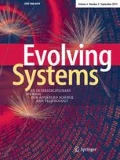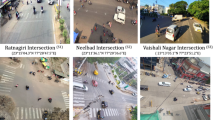Abstract
Vessel traffic management systems (VTMS) and vessel traffic monitoring information systems (VTMIS) have been available for a number of years now. These systems have significantly contributed to increasing the efficiency and safety of operations at sea. However, nowadays, risks at sea are once again on the rise, thus demanding an evolution in VTMS and VTMIS, such that they can support a human operator’s better understanding of the complex reality at sea and enhance his or her decision-making in light of danger. A critical requirement of such systems, is that they exhibit the ability to for-see unfolding cautious and potentially hazardous situations, so as to propose measures of danger avoidance. In this study, we employ machine learning, and specifically artificial neural networks, as a tool to add predictive capacity to VTMIS. The main objective of this study is to implement a publicly accessible, web-based system capable of real time learning and accurately predicting any vessels future behavior in low computational time. This work describes our approach, design choices, implementation and evaluation details, while we present a proof of concept prototype system. Our proposal can potentially be used as the predictive foundation for various intelligent systems, including vessel collision prevention, vessel route planning, operation efficiency estimation and even anomaly detection systems.









Similar content being viewed by others
References
ANAVE (2013) Merchant marine and maritime transport 2012/2013
Azoff EM (1994) Neural network time series forecasting of financial markets
Bevilacqua V (2006) Hidden markov models for recognition using artificial neural networks. International conference of intellignet computing. Springer, Berlin, p 1331
Bomberger N, Rhodes B, Seibert M, Waxman A (2006) Associative learning of vessel motion patterns for maritime situation awareness. 2006 9th international conference information fusion. IEEE, pp 1–8
Box GEP, Jenkins GM, Reinsel GC (1994) Time series analysis, forecasting and control, 3rd edn. Englewood Cliffs, Prentice Hall
Braga AP, Ludermir TB, Carvalho ACPLF (2000) Artificial neural networks. LTC, Rio de Janeiro
Cai Q, He H, Man H (2013) Spatial outlier detection based on iterative self-organizing learning model. Neurocomputing 117:161–172. doi:10.1016/j.neucom.2013.02.007
Chadwick J, Snyder T, Panda H (2012) Programming ASP.NET MVC 4: developing Real-world web applications with ASP.NET MVC. p 492
Ebada AMAM (2005) Prediction of ship turning manoeuvre using artificial neural networks. 8th Numer. Towing Tank Symp
Endsley MR (1988) Design and evaluation for situation awareness enhancement. Proc Hum Factors Ergon Soc Annu Meet 32:97–101. doi:10.1177/154193128803200221
Galloway J, Haack P, Wilson B, Allen KS (2012) Professional ASP.NET MVC 4 (Wrox Professional Guides). p 504
Gomes GSS, Ludermir TB (2013) Optimization of the weights and asymmetric activation function family of neural network for time series forecasting. Expert Syst Appl 40:6438–6446
Gomes L, Faria P, Morais H et al (2014) Distributed, agent-based intelligent system for demand response program simulation in smart grids. IEEE Intell Syst 29:56–65. doi:10.1109/MIS.2013.2
Heaton J (2008) Introduction to neural networks for C#, 2nd Edn. Heaton Research, p 428. http://www.amazon.com/Introduction-Neural-Networks-2nd-Edition/dp/1604390093
Heaton J (2011) Programming neural networks with Encog3 in C#, 2nd Edn. Heaton Research, p 240. http://www.amazon.com/Programming-Neural-Networks-Encog3-2nd/dp/1604390263
Karlaftis MG, Vlahogianni EI (2011) Statistical methods versus neural networks in transportation research: differences, similarities and some insights. Transp Res Part C Emerg Technol 19:387–399
Karlik B, Olgac AV (2010) Performance analysis of various activation functions in generalized MLP architectures of neural networks. Int J Artif Intell Expert Syst 1:111
Krishnakumar K (2003) Intelligent systems for aerospace engineering—an overview. National Aeronautics & Space Administration, Moffet field Ca Ames Research Center
Lagerweij R, Vries G de, Someren M van (2009) Learning a model of ship movements. Thesis for Bachelor of Science-Artificial Intelligence, University of Amsterdam
Laxhammar R, Falkman G, Sviestins E (2015) Anomaly detection in sea traffic–a comparison of the gaussian mixture model and the kernel density estimator. In: 12th international conference on information fusion, 2009. FUSION '09. IEEE, Seattle, WA, pp 756–763
Lopez A, Perez R, Moreno B (2011) Forecasting Performance and M-Competition. Does the accuracy measure matter? Int. Stat. Inst. Proc. 58th World Stat. Congr
Makridakis S, Hibon M (2000) The M3-competition: results, conclusions and implications. Int J Forecast 16:451–476. doi:10.1016/S0169-2070(00)00057-1
Makridakis S, Andersen A, Carbone R et al (1982) The accuracy of extrapolation (time series) methods: results of a forecasting competition. J Forecast 1:111–153. doi:10.1002/for.3980010202
Makridakis S, Chatfield C, Hibon M et al (1993) The M2-competition: a real-time judgmentally based forecasting study. Int J Forecast 9:5–22. doi:10.1016/0169-2070(93)90044-N
Mostafa MM (2004) Forecasting the Suez Canal traffic: a neural network analysis. Marit Policy Manag 31:139–156. doi:10.1080/0308883032000174463
Nicolau V, Aiordachioaie D, Popa R (2004) Neural network prediction of the wave influence on the yaw motion of a ship. 2004 IEEE international joint conference neural networks (IEEE Cat. No. 04CH37541). IEEE, pp 2801–2806
Pankratz A (1983) Forecasting with univariate box-jenkins models: concepts and cases. Wiley, New York
Perera LP, Oliveira P, Guedes Soares C (2012) Maritime traffic monitoring based on vessel detection, tracking, state estimation, and trajectory prediction. IEEE Trans Intell Transp Syst 13:1188–1200. doi:10.1109/TITS.2012.2187282
Rhodes BJ, Bomberger NA, Zandipour M (2007) Probabilistic associative learning of vessel motion patterns at multiple spatial scales for maritime situation awareness. 2007 10th International conference information fusion. IEEE, pp 1–8
Riedmiller M, Braun H (1993) A direct adaptive method for faster backpropagation learning: the RPROP algorithm. IEEE international conference neural networks. IEEE, pp 586–591
Rothblum AM (2002) Human error and marine safety. 2ND Int. Work. Hum. FACTORS OFFSHORE Oper
Santos B, Lunday K (2009) Maritime domain awareness. Coast Guard J Saf Secur Sea, In: Proceedings of marine safety and security council, p 66
Simsir U, Ertugrul S (2009) Prediction of manually controlled vessels’ position and course navigating in narrow waterways using artificial neural networks. Appl Soft Comput 9:1217–1224
Souza BA, Brito NSD, Neves WLA, et al (2004) Comparison between backpropagation and RPROP algorithms applied to fault classification in transmission lines. 2004 IEEE international joint conference neural networks (IEEE Cat. No.04CH37541). IEEE, pp 2913–2918
Stopford M (2009) Maritime Economics, 3rd edn. Routledge, p 840
US Department of Homeland Security (2005) National plan to achieve maritime domain awareness (MDA)
Verber D (2012) Implementation of massive artificial neural networks with CUDA. Cut Edge Res New Technol. doi:10.5772/2431
Westrenen F, Praetorius G (2012) Maritime traffic management: a need for central coordination? Cogn Technol Work. doi:10.1007/s10111-012-0244-5
Zandipour M, Rhodes B, Bomberger N (2008) Probabilistic prediction of vessel motion at multiple spatial scales for maritime situation awareness. 11th international conference information fusion
Zhang G, Eddy Patuwo B, Hu MY (1998) Forecasting with artificial neural networks: the state of the art. Int J Forecast 14:35–62
Acknowledgments
This work was supported in part by MarineTraffic Research.
Author information
Authors and Affiliations
Corresponding author
Rights and permissions
About this article
Cite this article
Zissis, D., Xidias, E.K. & Lekkas, D. Real-time vessel behavior prediction. Evolving Systems 7, 29–40 (2016). https://doi.org/10.1007/s12530-015-9133-5
Received:
Accepted:
Published:
Issue Date:
DOI: https://doi.org/10.1007/s12530-015-9133-5




